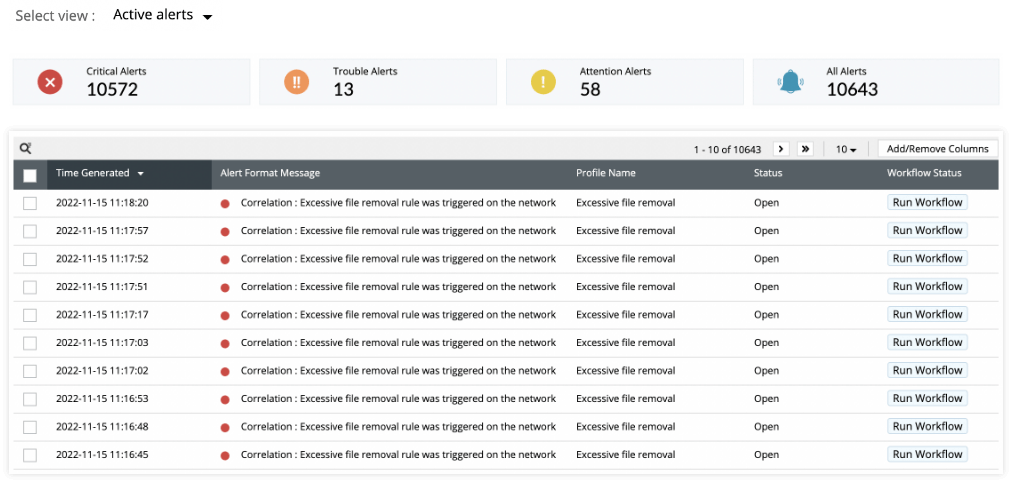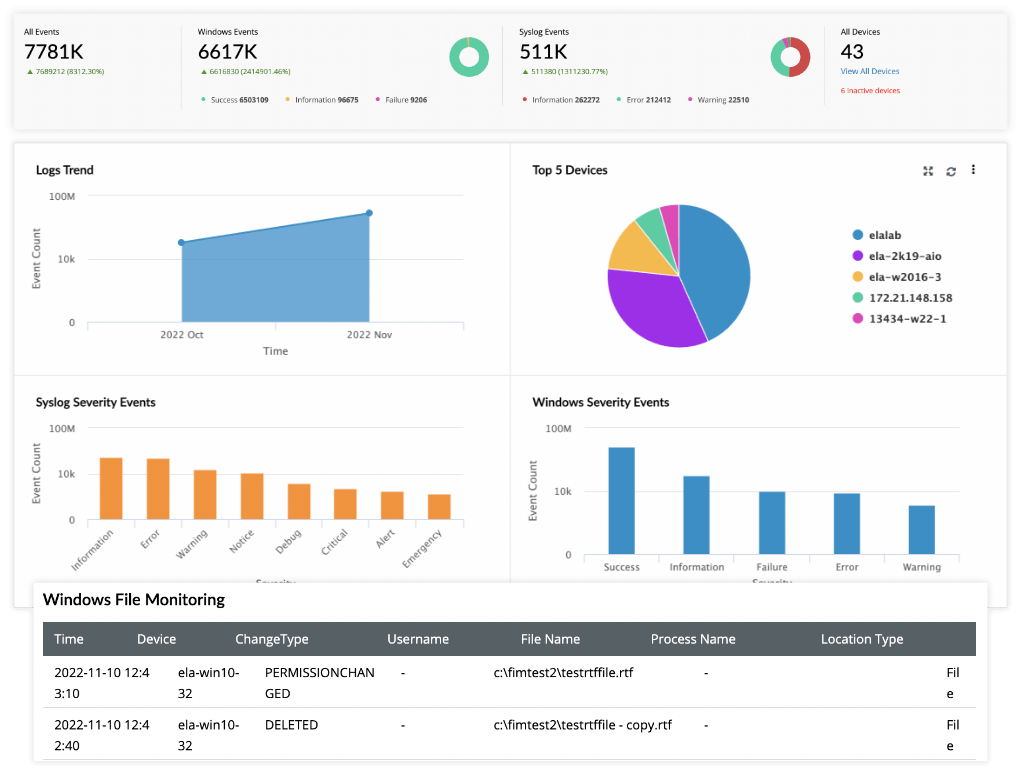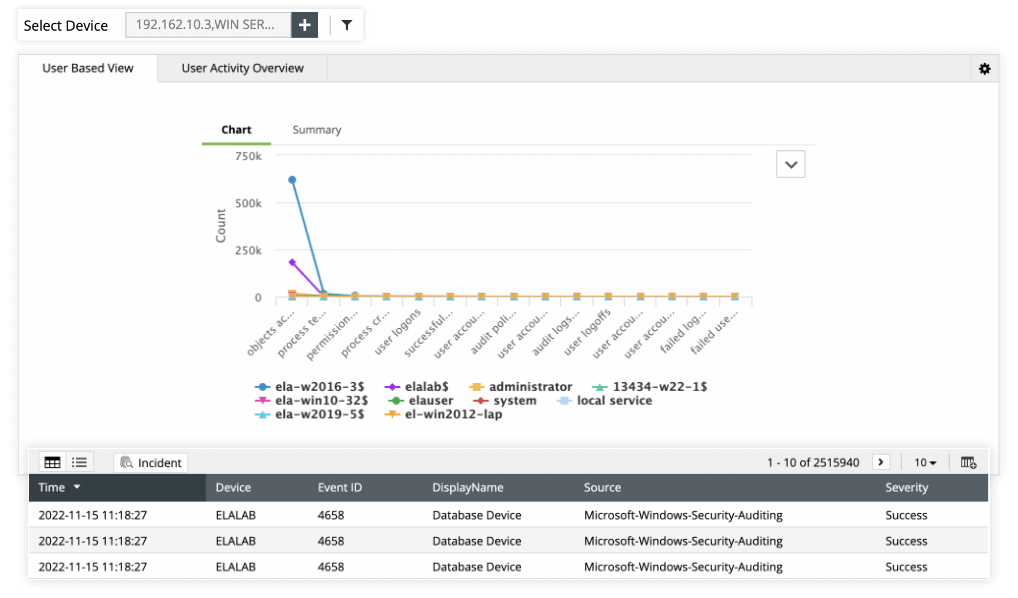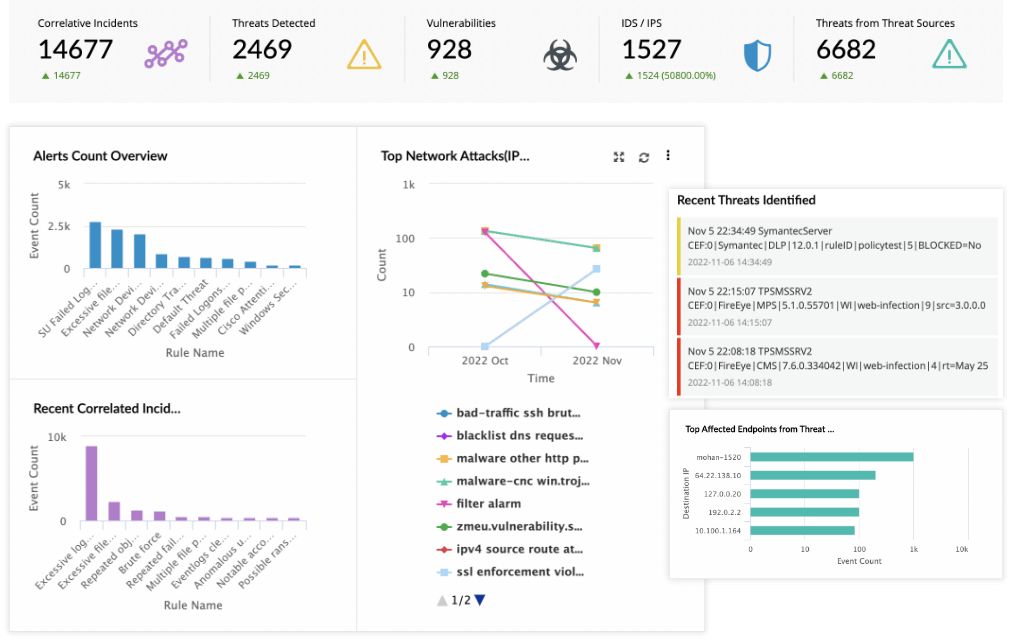| PCI requirements |
What is it? |
Predefined reports in EventLog Analyzer |
| PCI-DSS Requirement 1.1 |
Install and maintain a firewall and router configuration to protect cardholder data. |
- Network device configuration reports
|
| PCI-DSS Requirement 1.2 |
Build firewall and router configurations that restrict connections between untrusted networks and any system components in the cardholder data environment. |
- Network device configuration reports
- Network device security reports
|
| PCI-DSS Requirement 6.6 |
Ensure all public-facing web applications are protected against known attacks, either by performing code vulnerability reviews at least annually or by installing a web application firewall in front of public-facing web applications. |
- Network device attack reports
|
| PCI-DSS Requirement 10.1 |
Establish a process for linking all access to system components (especially access done with administrative privileges such as root) to each individual user. |
- Logon and logoff reports
- User access reports
- File changes
- Configuration reports
- Registry changes
|
| PCI-DSS Requirement 10.2.1 |
Establish audit procedures to monitor user access to cardholder data. |
- Logon and logoff reports
- Network device security reports
|
| PCI-DSS Requirement 10.2.2 |
Establish procedures to monitor all actions taken by any individual with root or administrative privileges. |
- Logon and logoff reports
- User access reports
- Network device configuration reports
- Network device security reports
|
| PCI-DSS Requirement 10.2.3 |
Ensure access to all audit trails, which lets organizations comply with internal controls by tracking the event logs for any changes in the security audit policy. |
- Logon and logoff reports
- Policy changes
- Firewall auditing
- Registry changes
- File changes
- Network device security reports
|
| PCI-DSS Requirement 10.2.6 |
Initialization of the audit logs to call for procedures that regularly review information system activity such as audit logs. |
|
| PCI-DSS Requirement 10.2.7 |
Establish procedures for audit creation and deletion of system-level objects. |
|















